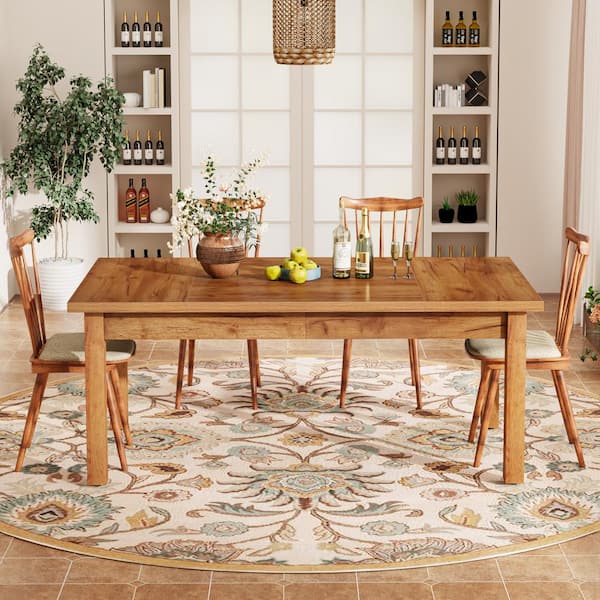Discover the Best Products for Dining Room Table Legs for every single Style
Discover the Best Products for Dining Room Table Legs for every single Style
Blog Article
A Comprehensive Appearance at Dining Table Leg Styles: Locating the Perfect Match
Selecting the right eating table leg design is important for both aesthetic appeal and practical functionality. Typical four legs supply ageless beauty and stability, while the stand base offers raised legroom and a modern appearance. For those with larger tables, trestle legs make certain durable support, whereas barrette legs present a mid-century modern-day ambiance with their minimal design. The x-shaped legs mix contemporary design with improved stability. Each of these choices brings one-of-a-kind advantages, making the choice greater than just an issue of choice. Discover additionally to find which design perfectly complements your dining space and way of life.
Traditional 4 Legs
Amongst the different kinds of table leg styles, the conventional four-leg style remains an ageless choice for several families. This timeless configuration supplies an unified mix of functionality and looks, making it a seasonal fave. 4 legs provide well balanced support, guaranteeing the table remains secure and efficient in bearing significant weight. This is particularly useful for families that frequently host huge celebrations or utilize their eating table for numerous objectives, such as job or crafting.
From an aesthetic viewpoint, the traditional four-leg layout can be quickly adjusted to different interior designs. Whether crafted from timber, metal, or a mix of materials, these legs can be delicately sculpted, sleek and minimalistic, or anything in between. Their convenience enables them to enhance both rustic and contemporary setups seamlessly.
Moreover, the simple structure of the four-leg style facilitates simplicity of activity and placement within an area. Unlike even more complicated bases, this design reduces blockages, offering sufficient legroom for restaurants. In recap, the typical four-leg eating table leg design weds enduring elegance with practical functionality, making it an astute selection for those seeking both form and function in their dining furnishings.
Pedestal Base
Frequently celebrated for its elegant and space-efficient design, the pedestal base is a notable option to the typical four-leg setup in dining table leg styles. Without edge legs, diners are managed better flexibility of movement, making it a perfect option for round and oval tables that promote even more intimate and comprehensive events.
The central column itself supplies a canvas for detailed designs and imaginative expressions, adding an aspect of visual passion beneath the table. In summary, the stand base integrates functionality with design, making it a fine-tuned and practical alternative for diverse dining environments.
Trestle Legs
Trestle legs provide a robust and timeless foundation for dining tables, characterized by their horizontal cross-bracing and strong support beam of lights. Originating from middle ages times, this design has actually evolved yet preserved its necessary framework, making it a seasonal favorite in both conventional and contemporary setups. The central trestle beam, typically sustained my latest blog post by 2 or more vertical messages, supplies exceptional security, enabling for larger table lengths without the demand for extra legs.
A substantial advantage of trestle leg tables is the sufficient legroom they provide. Unlike tables with 4 corner legs, the absence of blockages at the table's sides provides unblocked room for chairs and restaurants, boosting convenience and accessibility. This makes trestle tables suitable for suiting bigger events, whether in an eating space or a reception hall.
From rustic farmhouse to streamlined modern-day layouts, trestle legs can be customized to suit individual tastes. Their enduring appeal and functional benefits make trestle legs a compelling choice for those seeking both style and practicality in their eating table.
Barrette Legs

The appeal of site hairpin legs depends on their simplicity and convenience - dining room table legs. Offered in an array of materials, including steel and brass, they can be ended up in numerous shades to complement different indoor designs. Whether coupled with a rustic wooden tabletop or a contemporary glass surface area, barrette legs easily blend performance with a touch of classic beauty
Resilience is another significant attribute of barrette legs. Despite their delicate appearance, these legs are engineered to bear substantial weight, making sure the eating table continues to be secure and secure. Additionally, they are fairly easy to install, making them a popular option for DIY enthusiasts and professional furniture makers alike.
X-Shaped Legs

Built from products such as steel, wood, or a combination of both, X-shaped legs can be customized to match various style preferences. Steel legs often provide a streamlined and industrial feeling, perfect for loft-style houses and modern eating spaces. On the other hand, wood X-shaped legs offer a warmer, a lot more rustic allure, suitable for farmhouse or diverse interiors. The adaptability in products allows property owners to tailor their dining tables to much better fit their general layout scheme.
Moreover, the engineering behind X-shaped legs guarantees even weight distribution, lessening the threat of wobbling and boosting resilience. This makes them especially appropriate for bigger eating tables that need added assistance. Fundamentally, X-shaped legs mix functional design with modern-day aesthetics, making them a timeless choice for diverse dining environments.
Conclusion
A thorough understanding of eating table leg styles discloses the unique qualities and advantages of each style. Trestle legs guarantee durable assistance for larger tables, and barrette legs introduce a mid-century contemporary aesthetic.
Report this page